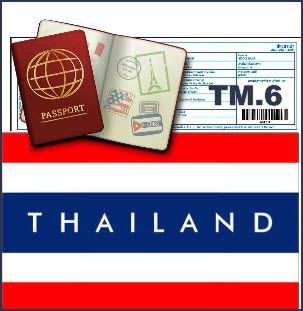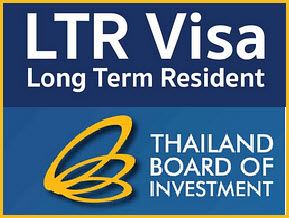|
- Home
- Thai Immigration
- Entering Thailand
|
The type of entry will determine the period Thai Immigration will allow you to stay in Thailand – Visa Exempt, Visa on Arrival, Tourist Visa, Non-Immigrant Visa, or Long Term Resident Visa. |
Please CLICK HERE to check our Latest Thai Immigration Information page for updates or temporary changes that are not included in these pages. |
Thailand has several ports of entry at both international airports and border crossing points. As with any country, the Kingdom has specific requirements for foreigners entering the country. What do I need to do to enter Thailand? The chart below shows the type of entry and the associated permitted period to stay in Thailand. The type of entry can be Visa Exempt (no visa required), obtaining a Visa on Arrival (obtained at port of entry), or obtaining a Visa from a Thailand Embassy or Consulate (application using the Thai E-Visa online service). Depending on the type of Visa, certain documents will be required which may differ depending on the Thai Embassy or Consulate where your E-Visa will be sent. Information regarding the applicable fee and any supporting documents required will be shown on that Embassy/Consulate website. Click here for more information and link to the online application. What do I do when I arrive? Previously, there was a requirement for completing a TM.6 Arrival/Departure Card and presenting it to the Thai Immigration official at the port of entry. This was suspended for a period of time and has now been replaced with the online Thailand Digital Arrival Card (TDAC). You must present your passport which must be be valid for the intended length of stay. If you are using a Visa, you will need a print out of the E-Visa you received after acceptance of you online application. You will also need to show the TDAC card (print it out or have it available for display on your phone or tablet). What will the Immigration Officer do? The Thai Immigration Officer will place a stamp in your passport giving you an “Admitted Until” date. The type of entry, Visa Exempt, Visa on Arrival, Tourist Visa, or Non-Immigrant Visa, will determine the length of permitted stay. [Please be sure to check the "Admitted Until Date" before you leave the Immigration counter - if not correct, which does happen, courteously point out the error to the Immigration Officer so it can be corrected - see below for the appropriate period of stay based on the type of entry] What is the difference between a "Visa" and a "Permission to Stay"? Please be aware that a "Visa" and a "Permission to Stay" are not the same. A Visa, usually issued via the online E-Visa application process will be a confirmation email setting forth the type of Visa, validity date of the Visa for entry, and whether it is single or multiple entry is the document that allows entry. Whereas a Permission to Stay is the amount of time you are permitted to stay in Thailand once you have been admitted. What happens if I overstay my permitted time in Thailand? It is strongly recommended that you do not OVERSTAY the admitted until date. You may hear that it is a simple matter and that you can pay a fine upon leaving Thailand (presently 500 Baht per day to a maximum of 20,000 Baht). However, it is illegal to overstay and if your documents are examined by the police before you arrive at your Thai immigration departure point, you will be arrested, jailed, fined, and deported at your expense.
If you should inadvertently overstay, you may wish to visit an Immigration Office - it is our understanding, they will levy the fine, but also extend the date for a short period to allow you time to leave the country (of course, if the overstay is lengthy (months/years), the Immigration Office may not be so lenient). What do the entries on my Visa and Permission to Stay stamp mean? The following chart explains what the entries on a Thai Visa and the Permission to Stay stamp represent : |
FREQUENCY OF ENTRY(IES) Single - Only one entry into Thailand is permitted using this Visa. Multiple - No limit on the number of entries using this Visa on or before the date shown for "Visa must be used by". |
|
Type | Permitted Stay | Extension of Stay | Remarks |
Visa Exempt (No Visa) | 60 Days
| Yes - Once for 30 days | Available to passport holders from 93 countries. Click here for a list of countries. Click the button below for more information on requirements for Entry: |
Visa on Arrival | 15 Days | No | Available to passport holders from 31 countries.
Click the button below for more information on requirements for Entry:
|
Tourist Visa | 60 Days | Yes - Once for 30 days | Click the button below for more information on requirements for this Visa: |
Non-Immigrant Visa (Most Common Categories "O", "B", & "ED") | 90 Days | Yes - Up to One Year |
Non-Immigrant Category O-A | One Year | Yes - for One Year | Often referred to as a "Retirement Visa" - must be obtained in your country of residence. Click the button below for more information on requirements for this Visa: |
Non-Immigrant Category O-X | Five Years | Yes - once for Five Years | Often referred to as a "10 Year Retirement Visa" - must be obtained in your country of residence. Click the button below for more information on requirements for this Visa: |
| Five Years | Yes - once for Five Years | This is a new Visa type beginning 1 September 2022. It is applied for from the Thailand Board of Investment rather than a Thai Embassy or Consulate. Click the button below for more information on requirements for this Visa: |
| Five Years | Yes - once for 180 days | This is a new Visa type beginning 15 July 2024. It is Multiple Entry granting a permission to stay of 180 days upon entry. |
Find us on: |






